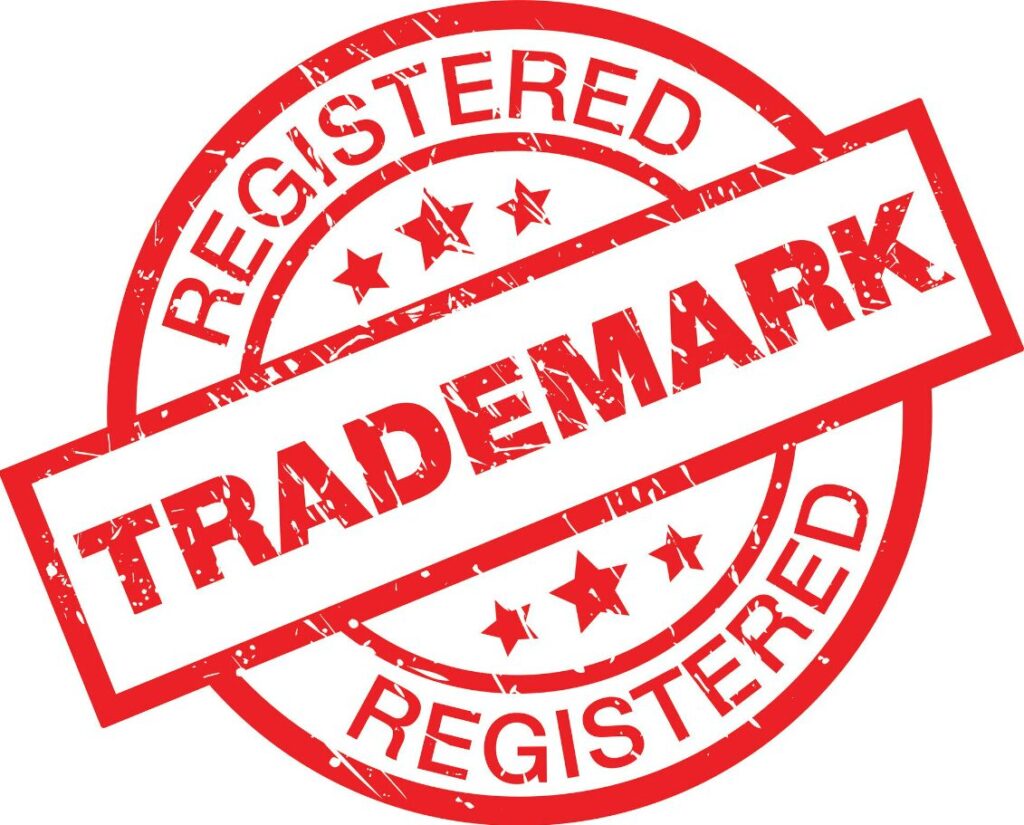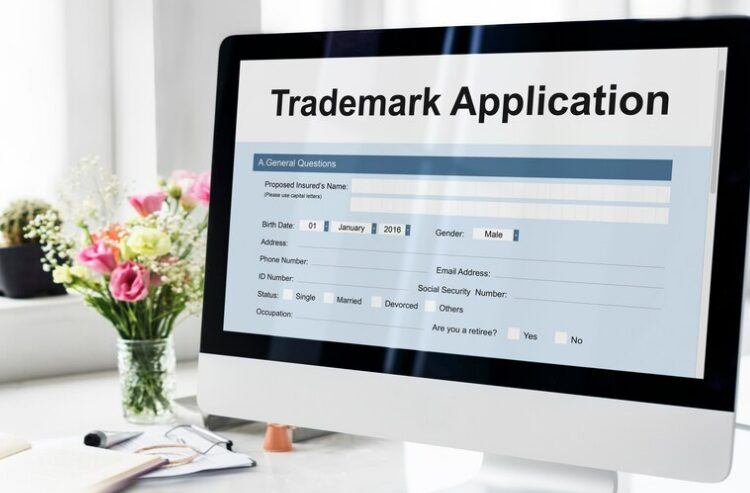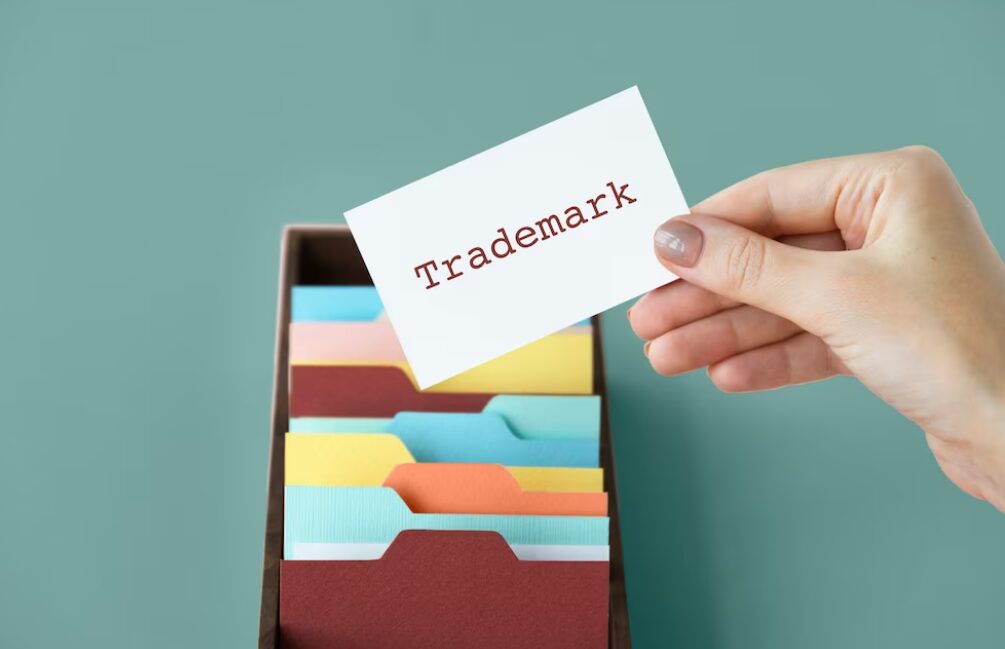Trademark Registration Online
Registering a trademark online involves several steps and varies depending on the country or region where you wish to register your trademark. Here’s a general overview of the process for trademark registration online:

Trademark Registration Online all information.
Trademark Search: Before you begin the registration process, it’s crucial to conduct a comprehensive trademark search to ensure that your desired trademark is not already in use or registered by another party. You can conduct a trademark search through the trademark database provided by the relevant authority in your country.
Selecting a Trademark: Choose a unique and distinctive trademark that represents your brand or product. Your trademark can be a word, phrase, logo, symbol, design, or combination thereof. It should be distinctive and not descriptive of the goods or services you offer.
Identify the Jurisdiction: Determine the jurisdiction where you want to register your trademark. Trademark registration is typically done on a country-by-country basis. You can register your trademark with the national trademark office or through regional trademark offices, depending on your business scope and target markets.
Trademark Application Form: Fill out the trademark application form provided by the relevant trademark office. Many trademark offices now offer online application portals where you can submit your application electronically.
Provide Details: You will need to provide various details and information in the trademark application, including:
Applicant’s details (name, address, contact information).
Representation of the trademark (logo, wordmark, etc.).
Description of goods or services covered by the trademark.
Priority claim, if applicable.
Details of any priority documents.
Declaration of intent to use the trademark (in some jurisdictions).
Trademark Classifications: Goods and services are classified into different classes for trademark registration purposes. You will need to specify the classes of goods or services that your trademark will cover. It’s essential to accurately identify the classes relevant to your business activities.
Pay the Fees: Trademark registration involves payment of filing fees, examination fees, and other charges as prescribed by the trademark office. The fees may vary depending on the jurisdiction and the number of classes covered by your trademark application.
Examination Process: Once you submit your trademark application, it will undergo a thorough examination by the trademark office to ensure compliance with legal requirements and to determine if there are any conflicting trademarks.
Publication and Opposition: In many jurisdictions, approved trademark applications are published in official gazettes or trademark journals for public notification. Third parties may have an opportunity to oppose your trademark registration during a specified opposition period.
Registration Certificate: If your trademark application is accepted and there are no oppositions or objections, you will receive a trademark registration certificate from the trademark office. This certificate provides legal protection for your trademark and grants you exclusive rights to use the trademark in connection with the specified goods or services.
What Can You Register As a Trademark?
Words: This includes single words, phrases, slogans, and taglines that are distinctive and not merely descriptive of the goods or services they represent. Examples include brand names like “Nike,” “Apple,” and slogans like “Just Do It.”
Logos and Designs: Logos, graphical symbols, emblems, and design elements can be registered as trademarks if they are distinctive and capable of identifying the source of goods or services. Examples include the Apple logo, the Nike swoosh, and the McDonald’s golden arches.
Letters and Numerals: Individual letters or numerals, stylized or in a particular font, can be registered as trademarks if they are distinctive and used to distinguish the goods or services of one entity from another.
Shapes and Three-Dimensional Marks: Certain shapes and three-dimensional configurations can be registered as trademarks if they are distinctive and not purely functional. Examples include the Coca-Cola bottle shape and the Toblerone chocolate bar shape.
Colors and Color Combinations: In some jurisdictions, colors and color combinations can be registered as trademarks if they have acquired distinctiveness through extensive use and have become associated with specific goods or services. For example, the color pink for Owens Corning insulation products.
Sounds: Unique sounds or jingles associated with particular products or services can be registered as trademarks if they are capable of distinguishing the goods or services of one entity from another. Examples include the Intel jingle and the MGM lion’s roar.
Smells and Tastes: In certain cases and jurisdictions, distinctive smells and tastes associated with products or services may be registrable trademarks. However, registration for such marks can be challenging and requires substantial evidence of distinctiveness and recognition.
Motion Marks: Moving images, animations, and sequences of images can be registered as trademarks if they are distinctive and capable of identifying the source of goods or services. Examples include the NBC chimes and the Lamborghini car door opening mechanism.
Why Is Trademark Registration Important?
Legal Protection: Trademark registration provides legal protection for your brand identity and intellectual property. It gives you exclusive rights to use the registered trademark in connection with the goods or services it represents, preventing others from using similar marks that could cause confusion among consumers.
Prevention of Unauthorized Use: Registered trademarks act as a deterrent against unauthorized use or infringement by competitors, counterfeiters, and unauthorized third parties. It allows you to take legal action against infringers and protect your brand reputation and goodwill.
Brand Recognition and Reputation: Trademarks help build brand recognition and reputation among consumers. A distinctive and well-known trademark can differentiate your products or services from competitors, increase consumer loyalty, and enhance brand value over time.
Market Expansion and Licensing Opportunities: Trademark registration facilitates market expansion and licensing opportunities by giving you exclusive rights to use the mark in different regions and jurisdictions. It allows you to license your trademark to third parties for use in specific markets or industries, generating additional revenue streams.
Asset Value and Business Valuation: Registered trademarks are valuable intangible assets that contribute to the overall value of your business. They can be listed as assets on financial statements and enhance the attractiveness of your business to investors, lenders, and potential buyers in mergers or acquisitions.
Online Protection and Domain Name Defense: Trademark registration helps protect your brand against cybersquatting and domain name abuse. It gives you legal grounds to dispute unauthorized use of your trademark in domain names and online platforms, helping to safeguard your online presence and brand integrity.
Global Protection: With international trademark registration systems such as the Madrid System, you can extend trademark protection to multiple countries through a single application process. This allows you to expand your business globally and protect your brand in key markets worldwide.
Enforcement and Legal Remedies: Trademark registration strengthens your position in legal disputes and enforcement actions against infringers. It provides a legal presumption of ownership and validity of the trademark, making it easier to enforce your rights and seek legal remedies such as injunctions, damages, and seizure of infringing goods.



Types of Trademark Registrations in India
Individual Trademark Registration: This is the most common type of trademark registration where an individual or entity applies to register a unique word, logo, symbol, design, or combination thereof as a trademark for specific goods or services.
Collective Trademark Registration: Collective trademarks are used by members of an association, cooperative, or collective group to identify goods or services provided by members who adhere to certain standards or characteristics established by the association. The trademark owner is typically an association or organization rather than an individual.
Certification Trademark Registration: Certification trademarks are used to certify certain characteristics or qualities of goods or services, such as origin, material, mode of manufacture, quality, accuracy, or other specific standards. These marks are granted to organizations or authorities that certify compliance with established standards.
Series Trademark Registration: Series trademarks allow for the registration of multiple trademarks within a single application, where the marks resemble each other in material particulars and differ only in elements that do not affect the identity of the mark. This type of registration is useful when a brand has multiple variations of a logo or design.
Well-Known Trademark Registration: Well-known trademarks are marks that are widely recognized and reputed in India and have acquired a high level of distinctiveness and goodwill among consumers. Well-known trademarks enjoy enhanced protection under Indian trademark law, even in unrelated classes of goods or services.
Defensive Trademark Registration: Defensive trademarks are registered to prevent others from registering or using similar marks that may dilute or tarnish the reputation of the brand. These registrations are often used to proactively protect the brand against potential infringement or misuse.
Textile Trademark Registration: Textile trademarks are specifically registered for textile goods, including fabrics, garments, and other textile products. These registrations help protect the branding and identity of textile manufacturers and suppliers in the Indian market.
Trademark Objections
Descriptiveness: The trademark may be considered descriptive or lacking distinctiveness, meaning it describes the goods or services rather than serving as an indicator of their source. Descriptive marks are generally not registrable unless they have acquired secondary meaning through extensive use.
Similarity to Existing Marks: The trademark may be similar to existing trademarks that are already registered or pending registration for similar goods or services. The examiner may raise objections if they believe the proposed mark is likely to cause confusion among consumers.
Generic or Deceptive Terms: The trademark may consist of generic terms that are commonly used to refer to the goods or services, making it ineligible for trademark protection. Additionally, marks that are deceptive or likely to mislead consumers may face objections.
Violates Public Order or Morality: The trademark may contain elements that are offensive, obscene, or contrary to public order or morality. Such marks are generally not registrable under trademark law.
Geographical Indicators: The trademark may contain geographical names or indications that falsely suggest a specific geographical origin for the goods or services, leading to objections from the trademark office.
Improper Representation: The trademark application may contain errors or inconsistencies in the representation of the mark, such as improper formatting, unclear drawings, or incomplete descriptions.
Non-Compliance with Formal Requirements: The trademark application may fail to meet certain formal requirements or procedural guidelines specified by the trademark office, resulting in objections or deficiencies that need to be addressed.
When a trademark application is objected to, the applicant is typically given an opportunity to respond to the objections raised by the trademark examiner. The applicant can submit written arguments, evidence, or amendments to overcome the objections and demonstrate the registrability of the trademark.
Trademark Opposition
Opposition Period: In many jurisdictions, including India and the United States, once a trademark application is published in an official gazette or trademark journal, there is a specified period during which interested parties can file an opposition. This opposition period typically ranges from 30 to 90 days from the date of publication.
Grounds for Opposition: Oppositions can be based on various grounds, including:
Likelihood of confusion with an existing trademark.
Descriptiveness or lack of distinctiveness of the trademark.
Deceptiveness or misleading nature of the trademark.
Violation of public order or morality.
Non-compliance with legal requirements or procedural deficiencies.
Filing an Opposition: To file an opposition, the opposing party (the opponent) submits a notice of opposition to the trademark office within the specified opposition period. The notice of opposition sets out the grounds for opposition and any supporting evidence or arguments.
Response by Applicant: Upon receiving the notice of opposition, the applicant (the party seeking registration of the trademark) has an opportunity to respond to the opposition by filing a counter-statement within the prescribed time frame. The counter-statement addresses the grounds for opposition and presents arguments and evidence in support of the trademark registration.
Evidence and Hearings: In some cases, the trademark office may allow both parties to submit evidence and arguments in support of their respective positions. This may include witness statements, documentary evidence, and legal arguments. In certain jurisdictions, there may also be a formal hearing where both parties can present their case orally.
Decision by Trademark Office: After considering the arguments, evidence, and submissions from both parties, the trademark office renders a decision on the opposition. The decision may result in the registration of the trademark, rejection of the application, or other outcomes, depending on the merits of the case.
Appeals and Further Recourse: If either party is dissatisfied with the decision of the trademark office, they may have the option to appeal the decision to a higher authority, such as a trademark appeals board or a court of law, depending on the jurisdiction.
Documents Required for Trademark Registration Online India
Applicant Details: Name, address, and nationality of the applicant (individual, company, or partnership).
If the applicant is a company or partnership, provide details of incorporation or registration.
Trademark Representation: A clear representation of the trademark you wish to register. This could be a wordmark, logo, device mark, or a combination thereof.
If the trademark includes colors, provide a colored representation of the mark.
Goods and Services Description: A detailed description of the goods or services associated with the trademark. You should classify the goods or services according to the appropriate NICE classification system.
Power of Attorney (if applicable): If the application is filed through a trademark attorney or agent, a power of attorney authorizing the agent to act on behalf of the applicant is required.
Date of First Use: If the trademark has been in use in India, provide the date of first use of the trademark in connection with the goods or services. This is optional but can be beneficial to establish prior use.
Priority Claim (if applicable): If you have previously filed a trademark application in another country and wish to claim priority based on that application, provide details of the earlier application.
Legal Entity Proof: In case of a company or partnership, provide proof of legal entity, such as incorporation certificate or partnership deed.
Identity and Address Proof: Identity proof (e.g., Aadhar card, passport, voter ID, or driver’s license) and address proof (e.g., utility bill, bank statement) of the applicant.
Authorization Letter: If the trademark application is filed by an agent or attorney, an authorization letter signed by the applicant authorizing the agent to file the application on their behalf is required.
Trademark Form: Complete the trademark application form provided by the Intellectual Property India (IPI) office or the online filing portal.
